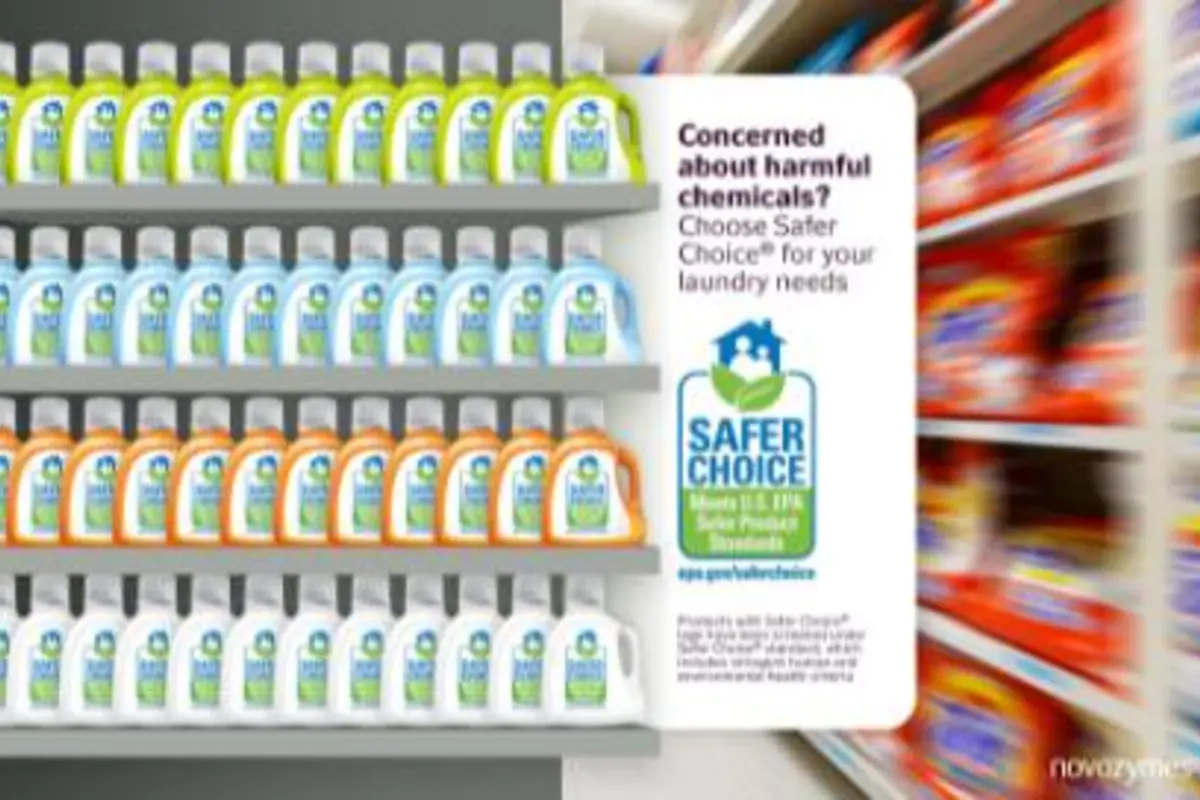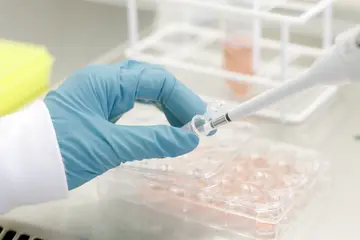Sustainable detergents
Novozymes’ work on improving detergents has also played a crucial part in winning the award. Conventional detergents used today typically contain ingredients derived from fossil fuels, a non-renewable resource. Surfactants, for example, are widely used in detergents to remove stains. However, they are often produced from crude oil, where extracting it can destroy natural habitats and disturb wildlife, and the refining process produces carbon emissions that contribute to global warming.
Novozymes is therefore exploring how enzymes – proteins that can accelerate chemical reactions in nature – can be used instead to help eradicate stains and reduce the amount of surfactants in detergents.
“What we are finding is that you can optimize performance by replacing up to 10-30% of surfactants with 1% of enzymes to match or exceed the wash performance,” says Ann C. Lee, a Staff Scientist in Novozymes’ Technical Service team for Household Care.
Product performance is another key criterion for Safer Choice, as alternative ingredients must also be as effective as conventional ones.
Efficient enzymes
Enzymes have a much lower carbon footprint than surfactants since they are produced through a natural fermentation process that involves microorganisms such as bacteria. Furthermore, they are a more sustainable option since a tiny amount can be substituted for a much larger quantity of surfactant.
“You do not need to add a lot of enzymes because they are catalytic in nature,” says Lee. “That means they can increase the rate of cleaning without themselves being consumed in the process.”
Using enzymes can further improve a detergent’s environmental credentials by reducing its carbon footprint during use. They can effectively remove stains when using cold water which isn’t the case with most detergents that rely only on surfactants. Conventional laundry detergents require hot water to effectively clean clothes, which consumes energy and produces significant carbon emissions as a result.
“When you look at the lifecycle of a detergent, about 90% of all the carbon emissions occur in the use phase when consumers are turning their dial up to warm or hot water,” says Peters.
Washing clothes in cold water could also help prevent the release of microfibers from clothing into the environment. Clothes made from synthetic fabrics such as polyester often shed tiny plastic fibers less than 5 millimeters in size during a wash which can end up in rivers and oceans and harm fish and aquatic life. Preliminary research suggests, however, that washing clothes in cold water and on shorter cycles can reduce shedding by up to 50%.
“Consumers can have a massive impact on how many microplastics are introduced in the environment by changing how they wash their clothes,” says Jatin Sharma, Regional Marketing Manager. “Novozymes’ enzymes are one of the pivotal technologies that help enable cold water washing in North America and the world.”
Since the Safer Choice program also seeks out ingredients that reduce pollution to the air and water, enzymes are a good fit.
New enzymes
Developing new enzymes will also help reduce the need for fossil-fuel-based surfactants. Whereas surfactants can effectively remove a wide range of stains, specific enzymes are needed to tackle each stain type. Lipases, for example, break down lipids in food oils and fats while amylases target starch-based foods such as pasta, puddings or gravy. But until recently, there was no enzyme to tackle body grime, which can leave clothes smelling sweaty even after a wash. Many conventional detergents can’t remove it either, often using fragrances to try and mask it with poor results.
“Sometimes you will see (shirt) collars turn yellowish or greyish over time,” says Lee. “That is because (body grime) was not removed the first time and it builds up.”
However, after a decade of work, Lee and her colleagues have now produced a breakthrough enzyme that targets extracellular DNA in bodily secretions such as sweat and breaks it down. Since extracellular DNA is sticky and viscous, dirt and other substances often cling to it.
“Our latest ingredient is a phosphodiesterase,” says Lee. “We are working with a lot of customers now on how they can formulate it in a detergent to go after body soil and as a consequence reduce body odor.”
The Safer Choice label should now help enzyme-based detergents to be more widely used. Consumers seeking out more sustainable and bio-based products will now be able to quickly spot them in supermarkets.
“It is one of the most recognized consumer labels,” says Melin. “I think this is one way for us to make a difference in how consumers do their laundry.”




